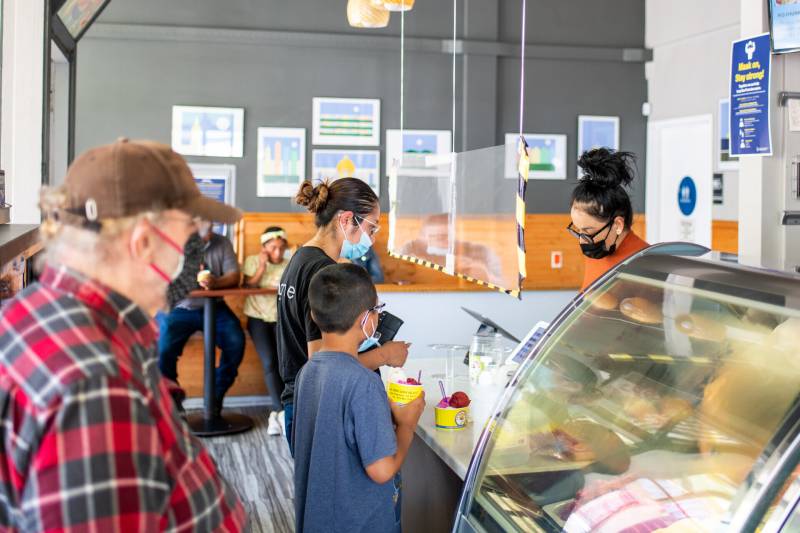Starting Wednesday, California is bringing back a rule requiring everyone — vaccinated or unvaccinated — to wear a mask indoors, a move aimed at containing the new highly infectious omicron variant of the coronavirus as people gather with family and friends during the holidays.
The new mandate will last until Jan. 15, Gov. Gavin Newsom’s administration announced Monday. The order comes as the per capita rate of new COVID-19 cases in California has jumped 47% in the past two weeks.
“We know people are tired and hungry for normalcy. Frankly, I am, too,” California Health and Human Services Secretary Dr. Mark Ghaly said Monday. “That said, this is a critical time where we have a tool that we know has worked and can work."
Ghaly noted that even a 10% increase in indoor masking can reduce case transmission significantly and encouraged better ventilation indoors.
California lifted its statewide mask mandate for vaccinated people on June 15, a date Newsom heralded as the state's grand reopening. But since then, a number of county governments representing about half the state's population — including most of the Bay Area — have imposed their own indoor mask mandates as case rates surged with new variants.
But even in a number those counties, the new state mandate will temporarily roll back rules in certain settings where mask requirements have largely been lifted, including most offices where everyone is vaccinated in San Francisco, Alameda and Contra Costa counties, and most public settings in Marin County, where vaccination rates are among the highest in the country.
The new mask mandate will cover people everywhere else in the state, but state officials on Monday were unclear about how it would be enforced. Ghaly said enforcement would likely be stronger in some places than others, but he urged Californians to heed the warnings and wear masks.
“We know that there's going to be people who don't necessarily agree with this, who are tired, who aren't going to mask,” Ghaly said. “We hope that those are few and far between, that most people see the purpose of doing this over the next month as something to protect them and their communities during a very tough time.”
